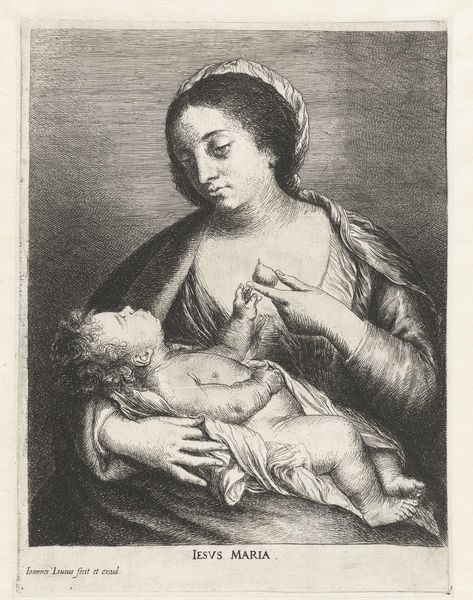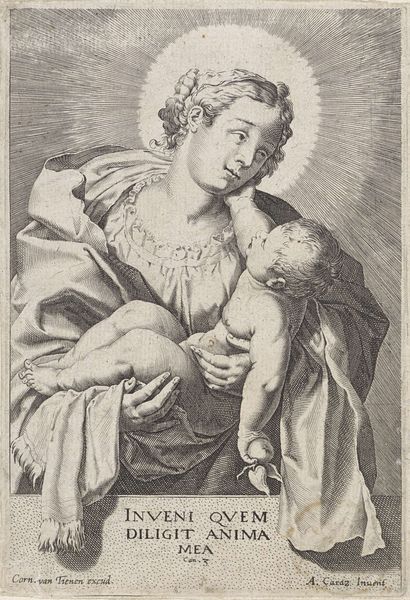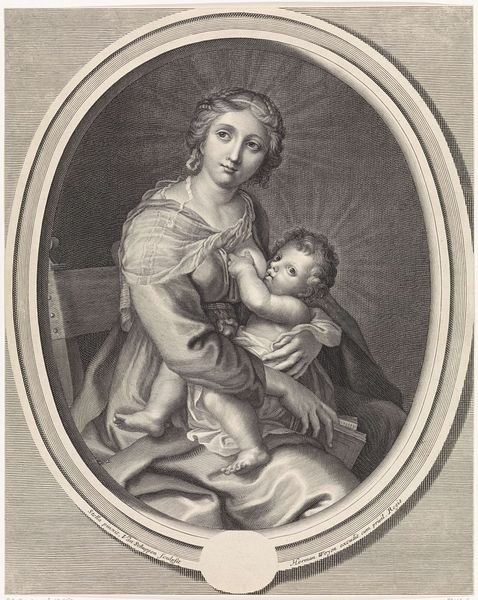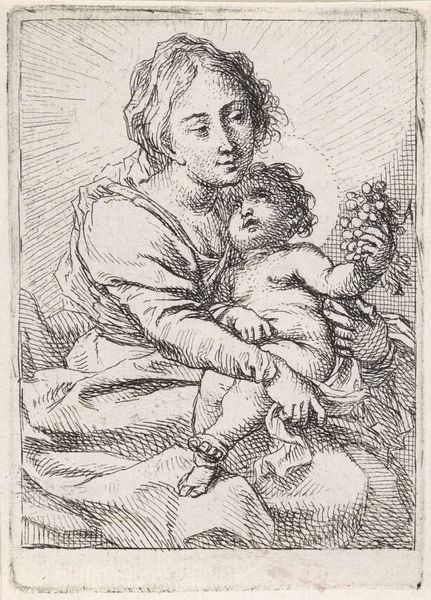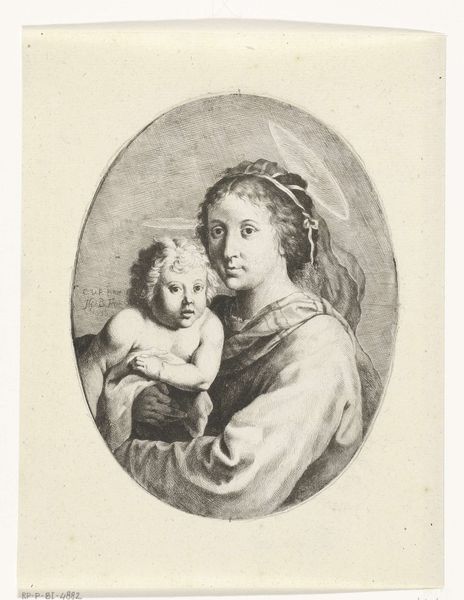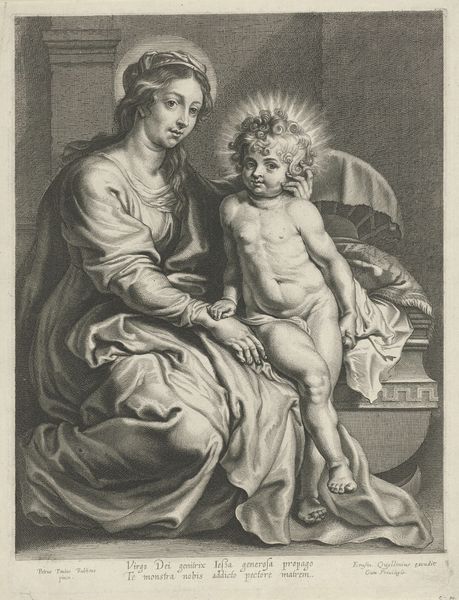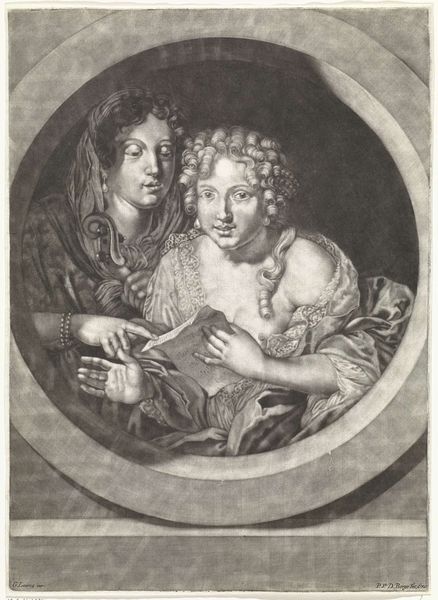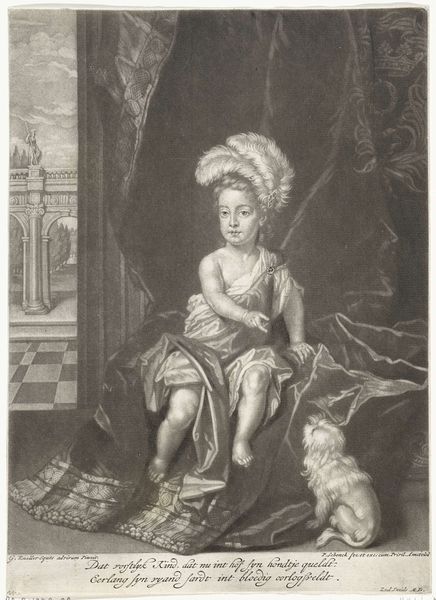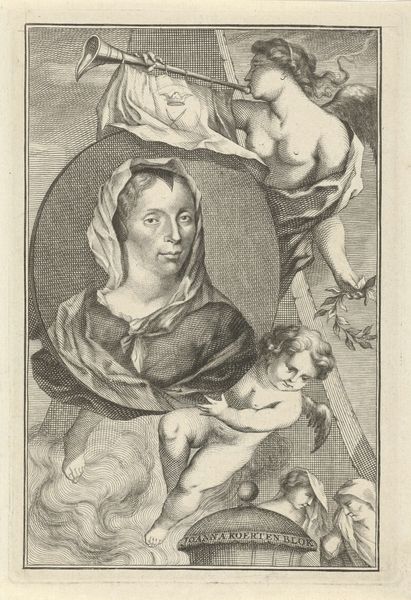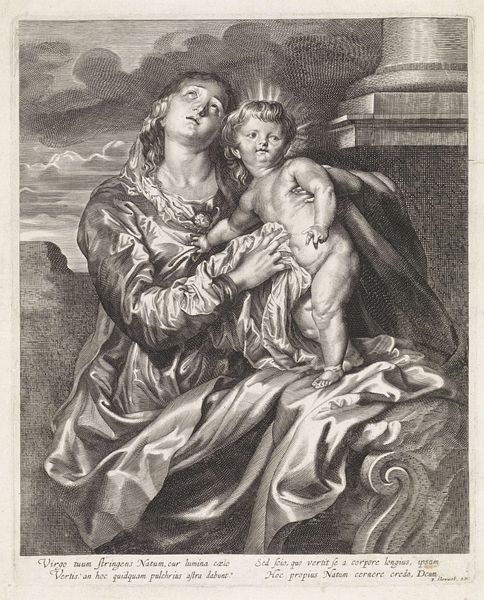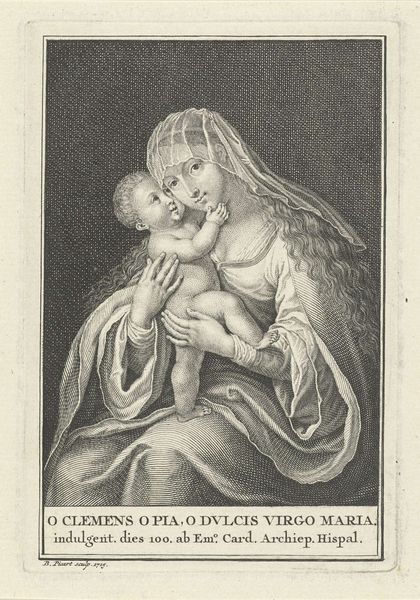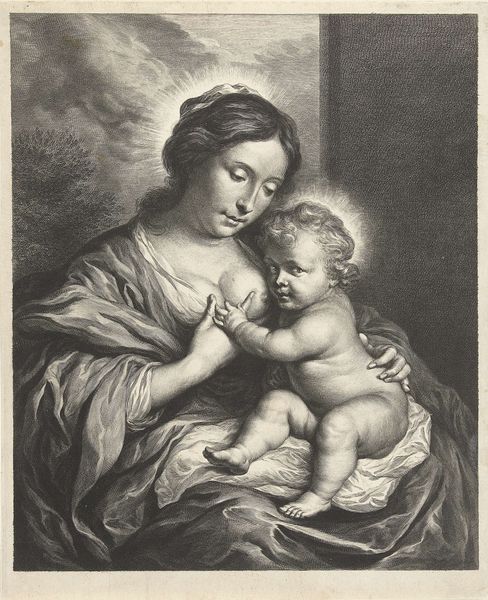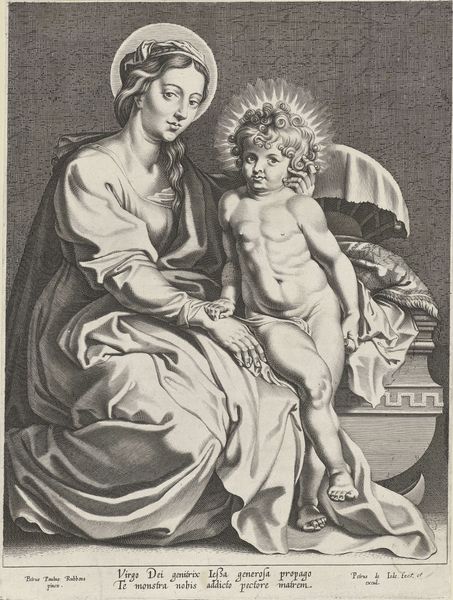
engraving
#
baroque
#
charcoal drawing
#
pencil drawing
#
surrealism
#
portrait drawing
#
history-painting
#
engraving
Dimensions: height 232 mm, width 188 mm
Copyright: Rijks Museum: Open Domain
Curator: This engraving is entitled *Maria met het Christuskind*, or Mary with the Christ Child. It’s the work of Johann Friedrich Leonard and dates to 1669. Editor: It has a strangely ethereal quality, almost dreamlike, rendered in what looks like shades of pale charcoal and ash. The oval frame intensifies the feeling of looking into a softly lit interior. Curator: Yes, Leonard employs the oval to create a kind of sacred, enclosed space. The halos emanating from the Virgin Mary and Christ Child resonate deeply with centuries of Christian iconography. Consider the symbolism of the maternal embrace. Editor: Indeed, the maternal motif is powerful here, but observe the technical skill: The lines, thin and precise, build form through tonal variation alone. The interplay of light and shadow defines every fold of fabric, every curve of flesh. Semiotically, the halos signify divinity, but the engraving technique is masterful. Curator: Precisely, it builds on an archetypal understanding of the divine feminine. The image harkens back to a vast cultural memory of the Madonna and Child as symbols of purity, motherhood, and divine grace, rendered in the style of the Baroque. Editor: The artist's handling of the engraved line is key. The image has this strange oscillation of clarity and abstraction due to this medium and use of only gray tone. I find it alluring. Curator: For me, the symbolism of light overcomes that quality; light emerging from both figures suggests enlightenment—literally illuminating faith in times of obscurity. It’s like an intimate portrayal that reflects universal hopes and anxieties. Editor: Well, I am struck how such a range of tonal texture can be achieved with this relatively ‘simple’ technique. The engraver utilizes a sophisticated economy of means to establish light, shadow, form, and texture. Curator: I think we both agree there’s more here than immediately meets the eye, or the ear, in our case. Editor: Absolutely; it invites us to explore art's ability to evoke complex emotional states through both symbolic representation and pure form.
Comments
No comments
Be the first to comment and join the conversation on the ultimate creative platform.
